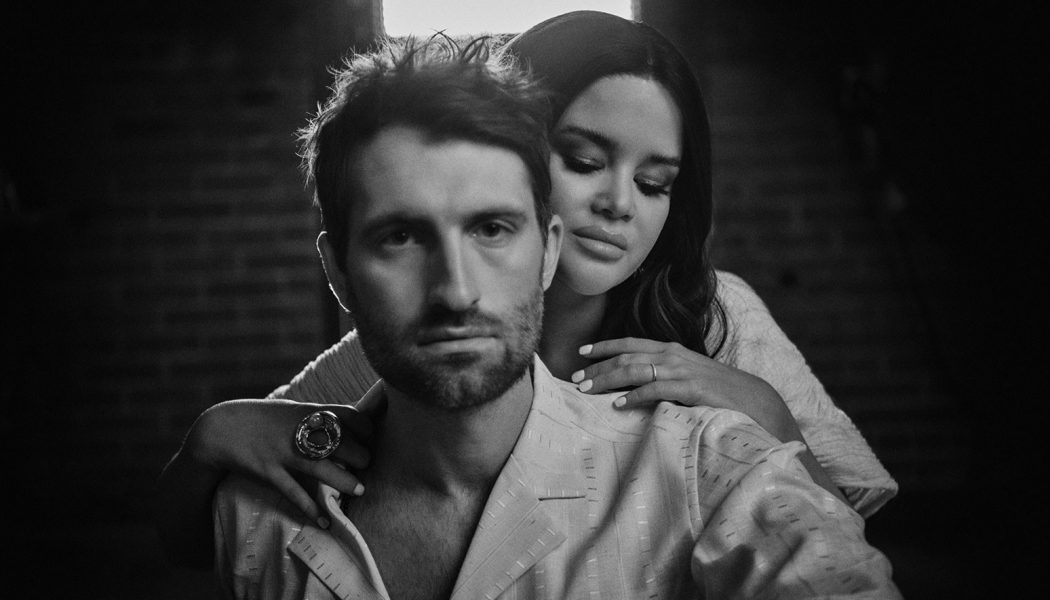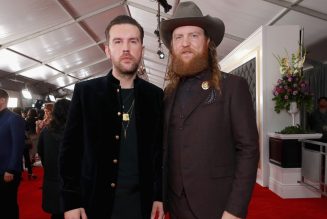
Tension, rather than comfort, is at the heart of “Chasing After You.” Much of it revolves around a haunting signature riff tipped with a hint of Eastern tonalities, delivered by a gritty guitar that sounds as if it’s being played in an empty Holiday Inn lounge just before opening.
“Ryan likes kind of a rock’n’roll edge while hiding in the facade of clean, if that makes sense,” says guitarist Teddy Reimer, who played the part on the single. “That was my attempt to create something that sounded kind of gritty and unpolished, but yet clean and professional. That’s kind of where the tone scape began.”
The guitar line itself is where “Chasing After You” started, though it was songwriter Jerry Flowers (“House Party,” “A Little More Summertime”) who originated it. Flowers, who plays bass in Keith Urban‘s band, eased into the riff just before his first co-write with Brinley Addington at Combustion Music on Music Row on Oct. 17, 2014. Addington heard it roll out as he climbed the stairs, and it provided an immediate focus to the appointment.
“I pretty much busted through like the Kool-Aid Man and said, ‘Hey, I’m Brinley. Whatever that is, we got to write that,’ ” remembers Addington.
Since they had never met before, the two writers took an hour or two to get acquainted, then buckled down on a song about two people who can’t quite commit to each other, but can’t quite let go, either. The story mirrored the real-life place that Flowers found himself in with his then-girlfriend, who has since become his wife.
“That moment in our relationship was kind of tumultuous,” recalls Flowers. “We just could not figure it out, and that’s what that was about. Like, you know, ‘I just guess I love chasing after you.’ “
Addington offered the first line, “You come over when your wine’s all gone,” and the song flowed from there during the course of the next hour. The verses followed the same melodic contour as the signature riff, and the chorus changed the phrasing just enough to create separation between the stanzas.
The “Chasing After You” title emerged only as they reached the final line in that chorus. On the way there, the chorus brushed with other references to movement — “Till you walk back out of my life,” “Leave me standing,” “The love you were running from” — though it’s subtle enough that the casual listener won’t be overwhelmed by the wordplay as it advances to the chase.
“I remember us talking about this,” says Addington. “We didn’t want to over-songwrite the thing.”
Urban was the first artist to hear it. Flowers just wanted feedback on the song and his ultra-simple demo. Instead, Urban put it on hold, then wrote a bridge with the thought of turning the song into a duet, perhaps with P!nk as a vocal partner. Urban was also the first to change the placement of the riff. Flowers had it beginning a half beat after the start of the measure, but Urban launched the riff one-and-a-half beats before the downbeat. Hurd and Morris made the same alteration.
“I’ve had to relearn the song,” notes Flowers. “But I will say, though, what they did completely worked. It sounds more radio the way they did it.”
Urban cut “Chasing” but never released it. Hurd, meanwhile, heard it when Addington played it live the first time, and he frequently asked about its availability. Hurd loved the track so much that he helped Addington get his second publishing deal mostly on the strength of that song.
Numerous acts placed holds on “Chasing” but never did anything with it. Hurd happened to call Addington again on a day the song had gone off hold, and he scooped it up for himself that afternoon. He subsequently cut a solo version of it while he was still an independent artist, and he recorded a duet version in which Morris sang the bridge, but they never released it.
When the coronavirus threw the world into isolation, Hurd asked Reimer to experiment with the song. Reimer spent close to a full day simply getting the right guitar tone and texture, then layered a series of mysterious, swirling sounds around it.
“A lot of that was from old synths or old samples I had found and chopped up,” says Reimer. “I kind of had my way with them and made them into something that they weren’t.”
Hurd recorded a new vocal to Reimer’s foundation, and “Chasing” quickly became a focus track within his camp.
“Having Teddy do that new version, I think, fired everybody up and gave everyone kind of some direction with it,” says producer Aaron Eshuis (Scotty McCreery, Austin Jenckes), who showed his appreciation for Reimer’s efforts by offering him co-producer credit. “They decided to make it an actual duet rather than having Maren just sing background, which she’s done a lot with Ryan.”
Eshuis enlisted Phil Lawson to overdub a real drum part and got Derek Wells to add in some small guitar parts, but left most of Reiner’s work intact.
“Teddy’s a super-creative guy and sent us some really awesome left-of-center ideas for the track,” says Eshuis. “It went through different road maps, but as far as like the things that he played and the parts and the tones and stuff like that, I barely touched it.”
Eshuis used a portable recorder to collect Morris’ vocals at home.
“One upside of the pandemic is if we’re not writing every day, it’s like, ‘Let’s take a look at this [older] song,’ ” Morris told Billboard. “We recorded our vocals in our basement and polished it up and were like, ‘Why don’t we release this? No one’s doing anything right now.'”
They eliminated the bridge, and Morris replaced it instead with a relaxed series of atmospheric “oohs.” And one particular piece of harmony, on the word “after,” brings the song’s inherent tension to a climax.
That sense of tension ultimately informed the video, which makes use of a small, revolving stage to create an appropriate push and pull between Hurd and Morris.
“The symbolism was the most important part of it,” says Hurd, underscoring “the idea of the never-ending pursuit.”
Released by Arista Nashville on Feb. 12, “Chasing After You” occupies the No. 49 position on the Hot Country Songs chart dated March 20. More than six years after Flowers sketched it into existence, the lonesome guitar riff finally gets the significant public airing that eluded it for so long.
“Sometimes it’s about timing,” says Hurd, “and nothing else.”
This article first appeared in the weekly Billboard Country Update newsletter. Click here to subscribe for free.










